Vancouver residents debate billion-dollar project
Naoibh O
Van. Courier

Grandview Theatre, 1730 Commercial Drive, July 22, 1930. VPL Accession Number: 11049. Photograph by: Photographer/Studio , Frank, Leonard

Grandview Theatre, 1730 Commercial Drive, now. Photograph by: Dan Toulgoet, Vancouver Courier.

1000 Block of Commercial Drive, 1922 VPL Accession Number: 7391. Photograph by: Photographer / Studio, Timms, Philip.

1000 Block of Commercial Drive, now. Photograph by: Dan Toulgoet, Vancouver Courier.

View of Commercial Drive and bank at 1800 block looking north west, 1922 VPL Accession Number: 7411. Photograph by: Photographer / Studio, Unknown.

View of Commercial Drive and bank at 1800 block looking north west, now. Photograph by: Dan Toulgoet, Vancouver Courier.

tracks, Commercial and Broadway, 1960. Photograph by: VPL Accession Number: 43337, Vancouver Courier.
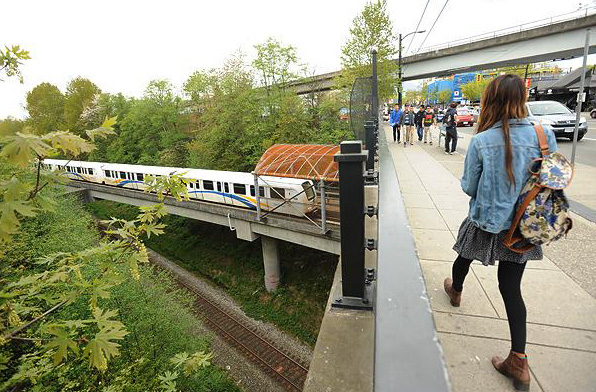
tracks, Commercial and Broadway, now. Photograph by: Dan Toulgoet, Vancouver Courier.

Philip Timms’ home, 1936 VPL Accession Number: 19548. Photograph by: Photographer/Studio, Timms, Philip.
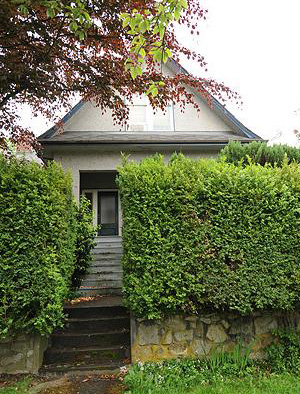
hilip Timms’ home, now. Photograph by: Dan Toulgoet, Vancouver Courier.
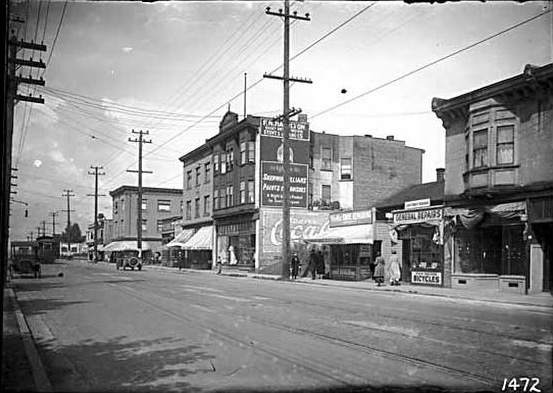
1600 block Commercial Drive, 1920s VPL Accession Number: 7144. Photograph by: Photographer/Studio, Timms, Philip.

1600 block Commercial Drive, now. Photograph by: Dan Toulgoet, Vancouver Courier.
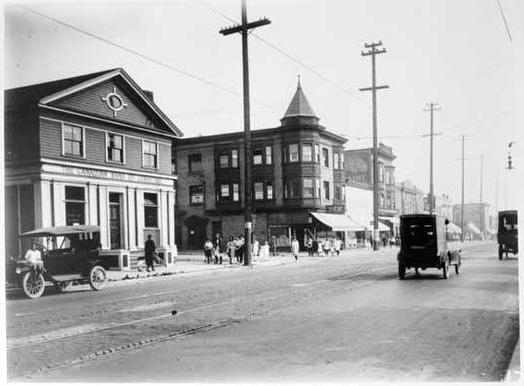
Commercial Drive at First Avenue intersection, 1922 VPL Accession Number: 7426. Photograph by: Photographer / Studio, Unknown.
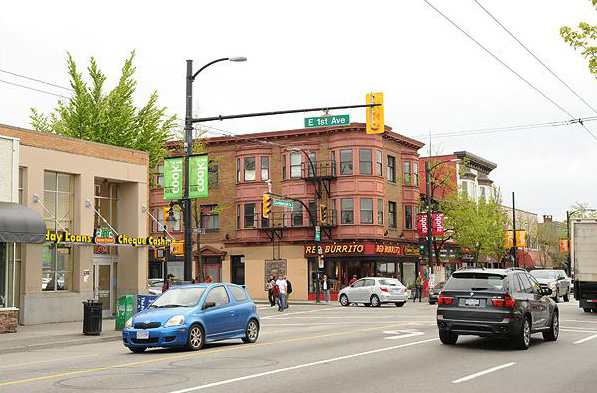
Commercial Drive at First Avenue intersection, now. Photograph by: Dan Toulgoet, Vancouver Courier.
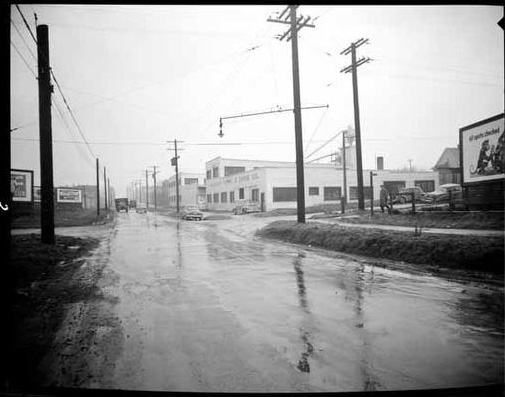
Clark Drive and Charles Street, Feb. 16, 1950 VPL Accession Number: 81150. Photograph by: Photographer / Studio, Artray.
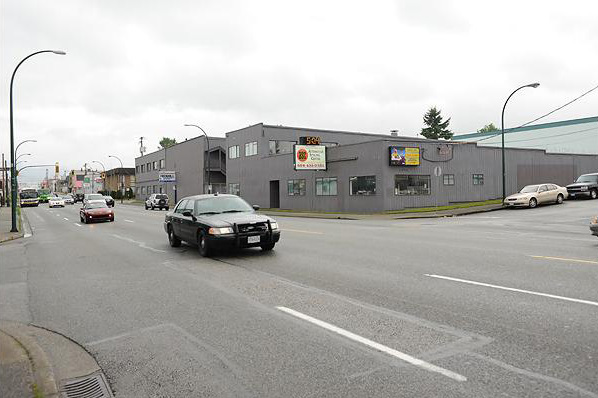
Clark Drive and Charles Street, now. Photograph by: Dan Toulgoet, Vancouver Courier.
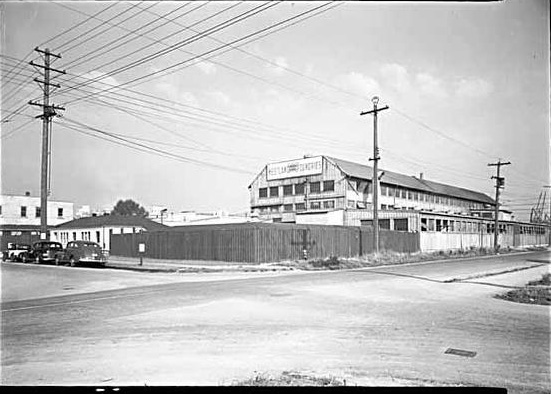
1395 Franklin, 1940s Westland Iron and Steel Foundries Limited Content: Westland Iron/Steel Foundries, 1395 Franklin. Photograph by: VPL Accession Number: 19665, Vancouver Courier.
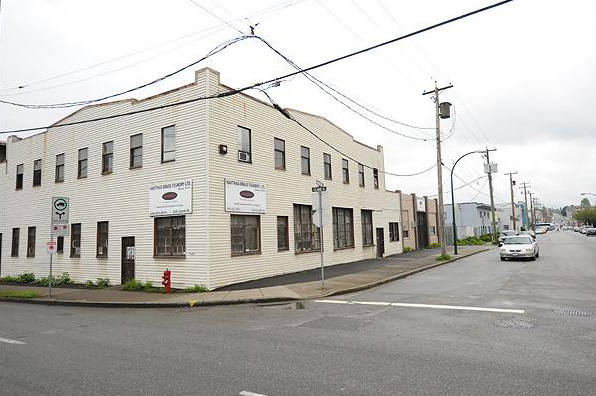
1395 Franklin, now. Photograph by: Dan Toulgoet, Vancouver Courier.
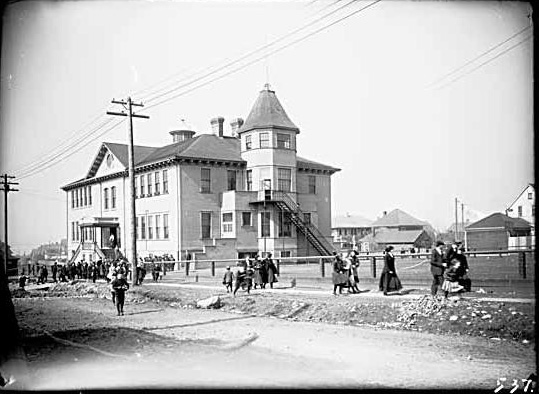
Grandview School, on East 1st near Commercial Drive,1914. VPL Accession Number: 5132. Photograph by: Photographer/Studio, Timms, Philip.
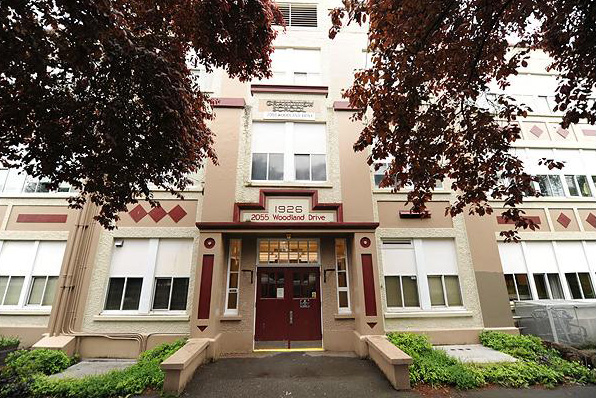
Grandview School, now. Photograph by: Dan Toulgoet, Vancouver Courier.
Pictures of Grandview and Woodland Past and Present
© Copyright (c) Vancouver Courier
Andrew Fleming
Van. Courier

$2.95 is the longstanding cost of the popular all-day breakfast special at Bon’s Off Broadway restaurant. Photograph by: Dan Toulgoet , Vancouver Courier.
1.5: In kilometres, the distance between Grandview Highway and Venables Street, the stretch widely considered as “The Drive” despite the street continuing for several more blocks in both direction.
2: Number of unaffiliated vegetarian restaurants with nearly identical French names. The original Café Du Soleil set up shop in 1992 while the larger Café Deux Soleils down the street opened its doors a few years later.
10: Percentage of residents who are of aboriginal descent, according to the 2011 census, eight per cent higher than the city-wide average.
4: Number of nationalities represented in the name of the WISE Hall. Homesick U.K. residents first started the social club in 1957 and the acronym was chosen represent its predominantly Welsh, Irish, Scottish and English membership.
40: In degrees Celsius, the typical temperature inside a class at Bikram Yoga Commercial Drive.
2.95: Longstanding cost of the popular all-day breakfast special at Bon’s Off Broadway restaurant.
125: Number of buildings listed on the city’s heritage register. Roughly a quarter of all homes in Grandview-Woodland were built before 1946.
66: Percentage of residents who rent their homes, 14 per cent higher than the citywide average, according to the 2011 census.
1: Number of bike polo courts. The Grandview Park playing area, completed in 2011 at a cost of $90,000, is said to be the first public court in the world designed specifically for bike polo.
385: Total number of seats available between the Vancouver East Cultural Centre’s two theatres. The Cultch’s Historical Theatre has a maximum capacity of 285 (although most shows have 195 seats) and the new Vancity Culture Lab can handle up to 100 audience members.
© Copyright (c) Vancouver Courier
Fiona Hughes
Van. Courier

Grandview-Woodland Photograph by: Courier , file
It’s officially known as Grandview-Woodland, but most Vancouverites refer to the neighbourhood that is bounded by Broadway to the south, Burrard Inlet to the north, Clark Drive to the west and to Nanaimo Street to the east as the Commercial Drive area.
It’s one of Vancouver’s most diverse neighbourhoods in terms of people, housing and land use and also one of its oldest. The 448-hectare East Side neighbourhood is home to 27,297 people, according to the 2011 census, which is a decline of about 900 people from six years earlier. Similar to the rest of the city, the largest age group is 30 to 44 year olds. More than two-thirds of the area residents are renters living in low-rise apartment buildings whose median household income is $35,342 (the city average is $47,299). About 10 per cent of the population self-identify as being aboriginal.
First-time visitors to the neighbourhood likely get a good sense that Grandview-Woodland is a little different thanks to Ken Lum’s famous “East Van” cross at Clark Drive and Great Northern Way. And while there is no poodle on a pole à la Main Street, there is an art installation more symbolic of the area – a giant blue cappuccino cup in Grandview Park (albeit one that’s now a bit chipped and used as a garbage receptacle).
Indeed, “the Drive,” which is the heart of the area, is home to such a concentration of cafes it’s a marvel they can all stay in business. But each is well-patronized by its own unique clientele that makes café hopping akin to a round-the-world trip without the need for a passport or different currency.
But it’s not all la dolce vita sipping espressos and cappuccinos. Because demand for new development is growing, city staff are working on an official plan to ensure that future growth in Grandview-Woodland meets the needs of the community. The area has been the centre of many protests, including one demonstration three years ago against the upgrading of Grandview Park. In recent weeks, a house under construction on East First Avenue near Victoria Drive was the target of an arsonist while some businesses have been vandalized by so-called anarchists protesting gentrification of the area. Stay tuned.
© Copyright (c) Vancouver Courier
Les Twarog Vancouver Real Estate and Condo Blog is proudly powered by
WordPress
Entries (RSS)
and Comments (RSS).
Articles are from various sources and courtesy to The Vancouver Sun, The Vancouver Province, The Vancouver Courier, USA Today, and others.
Bad Behavior has blocked 15593 access attempts in the last 7 days.